Τετάρτη 31 Οκτωβρίου 2007
Spencer Davies Group - i'm a man
Αναρτήθηκε από
Standin'AtTheCrossroads
στις
4:35 μ.μ.
0
σχόλια
![]()
![]()
Ετικέτες spencer davies group, uk, videos
Τρίτη 30 Οκτωβρίου 2007
Jeremy Dormouse "Toad" (Canadian Folk 1968)
 Obscure folk LP with a transition sound from 60s coffee house into 70s downer/loner moves. Lost in time atmosphere and idiosynchratic singing and playing makes for a trip with a clear identity, yet the connection between the arrangements, vocal mannerisms and underlying tunes seems random and "for the hell of it", rather than conscious explorations. Some tracks work, others don't, and all over it's pretty inconsistent. Covers of Dylan, Cohen and Bo Diddley (!) come off more like insults than bold interpretations, while the Lynda Squires led take on "High Flying Bird" is pretty cool. Of the originals most is average contemporary folk, with a high-point in the only track not by "Dormouse" (Cris Cuddy) or Marcus Wattington, Don Tapscott's sublime "Just To Hear The Bells". The album is semi-acoustic with electric bass and occasional percussion. Oddly, the LP has a similar sound (minus the autoharp) and the precise same problems as the Folklords. The album was recorded in 1967, and precedes the Rejects LP sessions. The Hallucinations CD is titled 'The Toad Recordings' and shows traces of vinyl press noise and high-end distortion in a few spots.
Obscure folk LP with a transition sound from 60s coffee house into 70s downer/loner moves. Lost in time atmosphere and idiosynchratic singing and playing makes for a trip with a clear identity, yet the connection between the arrangements, vocal mannerisms and underlying tunes seems random and "for the hell of it", rather than conscious explorations. Some tracks work, others don't, and all over it's pretty inconsistent. Covers of Dylan, Cohen and Bo Diddley (!) come off more like insults than bold interpretations, while the Lynda Squires led take on "High Flying Bird" is pretty cool. Of the originals most is average contemporary folk, with a high-point in the only track not by "Dormouse" (Cris Cuddy) or Marcus Wattington, Don Tapscott's sublime "Just To Hear The Bells". The album is semi-acoustic with electric bass and occasional percussion. Oddly, the LP has a similar sound (minus the autoharp) and the precise same problems as the Folklords. The album was recorded in 1967, and precedes the Rejects LP sessions. The Hallucinations CD is titled 'The Toad Recordings' and shows traces of vinyl press noise and high-end distortion in a few spots.
01. Baby Blue (Bob Dylan)02. Young Face (Waddington)03. High Flying Bird (Wheeler)04. Portrait For Marianne (Cuddy)05. Just To Hear The Bells (Tapscott)06. Sometimes You Ain't Got Nothin Boy (Waddington)07. By The Way (Cuddy)08. I Need A Friend (Allen)09. Suzanne (Leonard Cohen)10. Believe Me (Waddington)11. October Morning (Cuddy)12. Small Man (Waddington)13. Who Do You Love (McDaniel)14. Apple Annie (Cuddy)
Αναρτήθηκε από
Standin'AtTheCrossroads
στις
12:34 μ.μ.
0
σχόλια
![]()
![]()
Ετικέτες Canada, jeremy dormouse, psych folk
Κυριακή 28 Οκτωβρίου 2007
Ptarmigan - Ptarmigan (Canadian Psych Folk1969)
 Ptarmigan (with a small p) was formed in Vancouver B.C. in 1970 by Michael Bieling, James Lithgow and Glen Dias. Soon after the band’s formation Monte Nordstrom and Shawn Mullins were added to the line-up. The band performed in coffee houses and small venues around the Vancouver Island and Victoria areas and attracted the attention of world renowned American flautist Paul Horn who had just moved to B.C.
Ptarmigan (with a small p) was formed in Vancouver B.C. in 1970 by Michael Bieling, James Lithgow and Glen Dias. Soon after the band’s formation Monte Nordstrom and Shawn Mullins were added to the line-up. The band performed in coffee houses and small venues around the Vancouver Island and Victoria areas and attracted the attention of world renowned American flautist Paul Horn who had just moved to B.C.Musicians:

In 1971 the original line up fragmented reducing ptarmigan to the duo of Nordstrom and Dias. In 1972 the duo went to Ontario where they played some local clubs in Ottawa and Toronto making some impressive connections in the music industry , then headed back to Vancouver where they again met up with Paul Horn. Horn was so impressed by the duo’s music, he signed them to a publishing and recording contract.

Ptarmigan went into Canbase (Mushroom) Studios in Vancouver during the fall of 1972 and recorded some basic tracks that would eventually become the ptarmigan album. After the tracks were recorded it took Paul Horn nearly a year to sell the project to a label and in 1974 , Columbia Records of Canada released the self titled ptarmigan album.
The music on the album combined elements of jazz, folk and progressive rock.

Based around a flute, percussion and guitar interplay, the songs experience eastern influences, various moods, time changes and are rather simply structured yet complex in nature. Based around themes of nature and musical landscapes today the music could be classified as new age or environmental.
When the album was originally released in 1974 it did not sell well at all because of its non-commercial sound but over the years it has become a collectors item especially for progressive rock fans.
This is the first legitimate reissue of the Columbia album entirely done by band member Monte Nordstrom on his own GrooveDigger label. This limited edition, remastered version of the album features the original artwork along with four bonus tracks and a detailed booklet that contains band photos, as well as an in depth essay on the band and the recording of the album.
 his folk/jazz Westcoast acoustic recording predates New Age and Worldbeat by a decade. Eerie & introspective. Originally on Columbia of Canada. Now a Prog/cult item. In 1970, Monte Nordstrom was invited by singer/recorder player, Glen Dias to join the Vancouver Island ensemble, 'Ptarmigan'. The following year, Dias & Nordstrom toured Canada writing & performing new music on the coffeehouse circuit between Victoria's Queequeg, Winnipeg's Ting Tea Room & Ottawa's le Hibou. The highlight of this tour was in Ottawa when the duo spent two weeks opening for the legendary guitarist, Lenny Breau. Performing two shows per night for two weeks & socializing with Lenny was a highly influential experience for Monte. In 1972-73, international jazz master, Paul Horn produced the music of Ptarmigan at Mushroom Studio in Vancouver. Columbia Records released the Ptarmigan LP in early 1974. The launch of the Ptarmigan release was at The Egress nightclub in Vancouver, where Nordstrom & Dias spent a week opening for the Paul Horn Quintet. The duo last performed together in 1978 at the Midsummer Affair festival. Ptarmigan was a very unusual & noncommercial music that was ahead of its time. The ethereal ambience of Nordstrom & Dias' compositions continue to impress a wide spectrum of people. A bootleg European release on vinyl in the 80s created a cult following in the Progressive rock genre. In response to this continuing interest, the authorized Ptarmigan CD is re-issued through this website.
his folk/jazz Westcoast acoustic recording predates New Age and Worldbeat by a decade. Eerie & introspective. Originally on Columbia of Canada. Now a Prog/cult item. In 1970, Monte Nordstrom was invited by singer/recorder player, Glen Dias to join the Vancouver Island ensemble, 'Ptarmigan'. The following year, Dias & Nordstrom toured Canada writing & performing new music on the coffeehouse circuit between Victoria's Queequeg, Winnipeg's Ting Tea Room & Ottawa's le Hibou. The highlight of this tour was in Ottawa when the duo spent two weeks opening for the legendary guitarist, Lenny Breau. Performing two shows per night for two weeks & socializing with Lenny was a highly influential experience for Monte. In 1972-73, international jazz master, Paul Horn produced the music of Ptarmigan at Mushroom Studio in Vancouver. Columbia Records released the Ptarmigan LP in early 1974. The launch of the Ptarmigan release was at The Egress nightclub in Vancouver, where Nordstrom & Dias spent a week opening for the Paul Horn Quintet. The duo last performed together in 1978 at the Midsummer Affair festival. Ptarmigan was a very unusual & noncommercial music that was ahead of its time. The ethereal ambience of Nordstrom & Dias' compositions continue to impress a wide spectrum of people. A bootleg European release on vinyl in the 80s created a cult following in the Progressive rock genre. In response to this continuing interest, the authorized Ptarmigan CD is re-issued through this website.Produced by Paul Horn for VIP Ltd. (Vancouver Island Productions)Recording Engineer: Keith Stein. Mixed by Paul Horn & Keith Stein Cover Art & Photo: Glen Dias. Ptarmigan Logo: James NorquayAll songs composed by: Glen Dias & Monte NordstromPublished by Samadhi Music, BMI; Northstream Music/SOCAN & Bear Bones Music/SOCANRecorded at Canbase (Mushroom) Studios, Vancouver, Canada Musicians: Glen Dias: Vocals, Recorders & Percussion Monte Nordstrom: Vocals & Twelve String Guitar Kat Hendrikse: Drums Dave Field: Acoustic Bass Richard Mayer: Electric Bass (The Island)Peter Wheeler: Hand Drums Paul Horn: Percussion
This Re-Issue is dedicated to David Aston
Bonus Track:
"Midsummer Affair" (1978; from GDR44 "Silhouette of Our Insanity")
13: Chimborazo (Nordstrom) (7:00) Monte Nordstrom: Vocal, Guitar; Glen Dias: Shaker
14: Chimborazo - studio tag (1:38) Michael Bieling: Congas; Raymond Bruvold: Bass; Dave Rowse: Sax; Barry Dayman: Flute/Mandolin; Jim Shain: Guitar/PhoTron
13: Engineered by Greg Pauker
14: Engineered by Ed deBree;
Produced by Monte Nordstrom
Re-mastered at Media Magic, Victoria, BC by Mark Franklin & Monte Nordstrom.
Thanks to Paul Horn!Graphics, Layout & Digital Photo
Edits by Barry Newman: www.cvnet.net/cosmic
Booklet Art Direction, Text, Titles & Design by Monte Nordstrom 1999 Groovedigger Records, Box 196 Crofton, BC, CANADA, V0R 1R0Website: http://www.montenordstrom.com/

Αναρτήθηκε από
Standin'AtTheCrossroads
στις
1:41 π.μ.
6
σχόλια
![]()
![]()
Ετικέτες Canada, psych folk, psych folk indian, ptarmigan
Σάββατο 27 Οκτωβρίου 2007
Odetta - Odetta Sings Folk Songs (US Protest Folk 1963)
 Janis Joplin - "Janis spent much of her adolescence listening to Odetta, who was also the first person Janis imitated when she started singing".Bob Dylan, who said, "The first thing that turned me on to folk singing was Odetta. I heard a record of hers [Odetta Sings Ballads and Blues] in a record store, back when you could listen to records right there in the store. Right then and there, I went out and traded my electric guitar and amplifier for an acoustical guitar, a flat-top Gibson. ... [That album was] just something vital and personal. I learned all the songs on that record. It was her first and the songs were- 'Mule Skinner', 'Waterboy', 'Jack of Diamonds', ''Buked and Scorned'' In 1965, Odetta recorded an album of Dylan covers, Odetta Sings Dylan.
Janis Joplin - "Janis spent much of her adolescence listening to Odetta, who was also the first person Janis imitated when she started singing".Bob Dylan, who said, "The first thing that turned me on to folk singing was Odetta. I heard a record of hers [Odetta Sings Ballads and Blues] in a record store, back when you could listen to records right there in the store. Right then and there, I went out and traded my electric guitar and amplifier for an acoustical guitar, a flat-top Gibson. ... [That album was] just something vital and personal. I learned all the songs on that record. It was her first and the songs were- 'Mule Skinner', 'Waterboy', 'Jack of Diamonds', ''Buked and Scorned'' In 1965, Odetta recorded an album of Dylan covers, Odetta Sings Dylan.Joan Baez said "Odetta was a goddess. Her passion moved me. I learned everything she sang''

Αναρτήθηκε από
Standin'AtTheCrossroads
στις
8:18 μ.μ.
1 σχόλια
![]()
![]()
Ετικέτες folk blues, odetta, us
Cold Mountain - The Soundtrack (2003)
 The Cold Mountain soundtrack shares producers (T Bone Burnett) with the soundtrack for O Brother Where Art Thou, a largely old-time and folk album with limited radio play that still enjoyed commercial success, and garnered a Grammy. As a result, comparisons were drawn between the two albums. The Cold Mountain soundtrack, however, also employs many folk and blues elements. It features songs written by Jack White of The White Stripes (who also appeared in the film in the role of Georgia), Elvis Costello, and Sting. Costello and Sting's contributions, "The Scarlet Tide" and "You Will Be My Ain True Love", were both nominated for the Academy Award for Best Original Song and featured vocals by Bluegrass singer Alison Krauss. Gabriel Yared's Oscar-nominated score is represented by four tracks amounting to approximately fifteen minutes of music.
The Cold Mountain soundtrack shares producers (T Bone Burnett) with the soundtrack for O Brother Where Art Thou, a largely old-time and folk album with limited radio play that still enjoyed commercial success, and garnered a Grammy. As a result, comparisons were drawn between the two albums. The Cold Mountain soundtrack, however, also employs many folk and blues elements. It features songs written by Jack White of The White Stripes (who also appeared in the film in the role of Georgia), Elvis Costello, and Sting. Costello and Sting's contributions, "The Scarlet Tide" and "You Will Be My Ain True Love", were both nominated for the Academy Award for Best Original Song and featured vocals by Bluegrass singer Alison Krauss. Gabriel Yared's Oscar-nominated score is represented by four tracks amounting to approximately fifteen minutes of music.
Petersburg Crater Union Trench
Η υπόθεση της ταινίας είναι λίγο πολύ γνωστή. Η Ada Monroe (Kidman), μια γυναίκα με καλή ανατροφή φτάνει μαζί με τον πατέρα της (Sutherland) στην μικρή πόλη Cold Mountain. Εκεί γνωρίζει τον Inman (Law), έναν απλό εργάτη αλλά η γνωριμία τους διακόπτεται από τον εμφύλιο πόλεμο, μιας που ο Inman αναγκάζεται να καταταχθεί. Μετά από 3 χρόνια στο μέτωπο ο Inman, αηδιασμένος αποφασίζει να λιποτακτήσει και να επιστρέψει στην Ada, η οποία στο μεταξύ έχει χάσει τον πατέρα της και έχει βρει στήριγμα στην εργατική χωριατοπούλα Ruby (Zellweger).





Petersburg VA 1865
Cold_Mountain__2003__Soundtrack___256kb_.part1.rar
Cold_Mountain__2003__Soundtrack___256kb_.part2.rar
Αναρτήθηκε από
Standin'AtTheCrossroads
στις
5:11 μ.μ.
1 σχόλια
![]()
![]()
Ετικέτες cold mountain, soundtracks, us, Various Artists
Jo Ann Kelly - Jo Ann Kelly (Epic Rec.1969)

The rock era saw a few white female singers, like Janis Joplin, show they could sing the blues. But one who could outshine them all -- Jo Ann Kelly -- seemed to slip through the cracks, mostly because she favored the acoustic, Delta style rather than rocking out with a heavy band behind her. But with a huge voice, and a strong guitar style influenced by Memphis Minnie and Charley Patton, she was the queen.

What Color Is Blues?
Born January 5, 1944, Kelly and her older brother Dave were both taken by the blues, and born at the right time to take advantage of a young British blues scene in the early '60s. By 1964 she was playing in clubs, including the Star in Croydon, and had made her first limited-edition record with future Groundhogs guitarist Tony McPhee. She expanded to play folk and blues clubs all over Britain, generally solo, but occasionally with other artists, bringing together artists like Bessie Smith and Sister Rosetta Tharpe into her own music. After the first National Blues Federation Convention in 1968 her career seemed ready to take flight. She began playing the more lucrative college circuit, followed by her well-received debut album in 1969. At the second National Blues Convention, she jammed with Canned Heat, who invited her to join them on a permanent basis. She declined, not wanting to be a part of a band -- and made the same decision when Johnny Winter offered to help her. Throughout the '70s, Kelly continued to work and record solo, while also gigging for fun in bands run by friends, outfits like Tramp and Chilli Willi -- essentially pub rock, as the scene was called, and in 1979 she helped found the Blues Band, along with brother Dave, and original Fleetwood Mac bassist Bob Brunning. The band backed her on an ambitious show she staged during the early '80s, Ladies and the Blues, in which she paid tribute to her female heros. In 1988, Kelly began to suffer pain. A brain tumor was diagnosed and removed, and she seemed to have recovered, even touring again in 1990 with her brother before collapsing and dying on October 21. Posthumously, she's become a revered blues figure, one who helped clear the path for artists like Bonnie Raitt and Rory Block. But more than a figurehead, her recorded material -- and unreleased sides have appeared often since her death -- show that Kelly truly was a remarkable blueswoman. ~ Chris Nickson, All Music Guide
 Jo Ann Kelly & Son House
Jo Ann Kelly & Son House
Αναρτήθηκε από
Standin'AtTheCrossroads
στις
3:57 μ.μ.
2
σχόλια
![]()
![]()
Ετικέτες folk blues, jo ann kelly, uk
Earl Hooker - Sweet Black Angel (1970)
Born Earl Zebedee Hooker in Clarksdale, Mississippi, his impoverished family moved to Chicago, Illinois when he was still an infant. Influenced by parents and relatives who played music, he was a cousin of John Lee Hooker and began playing guitar as a teenager.
Earl Hooker died at the age of 41 after a lifelong struggle against tuberculosis, which is alluded to in the title of a 1972 compilation album of his work, "There's a Fungus Among us." He was interred in the Restvale Cemetery in Alsip, Illinois. His story was told in a 2001 book by author Sebastian Danchin titled Earl Hooker, Blues Master.
Although, Earl Hooker died in 1970, his music still continues on in the rock band Daphne Blue, which includes Freddie Roulette , the original Lap Steel guitar player from Hooker's band, and his songwriting partner, Ray Bronner.

Αναρτήθηκε από
Standin'AtTheCrossroads
στις
3:19 μ.μ.
2
σχόλια
![]()
![]()
Ετικέτες blues, earl hooker, us
Josh White - Hard Time Blues (Country Folk Blues - Political Folk Singer)
From somewhere on the other side.
Now he's part of the Heavenly Choir,
Copyright: Evil Eye Music/Melody Trails Music -BMI
Peter Yarrow: After Josh White's funeral, one of his dearest proteges, Peter Yarrow of Peter, Paul & Mary, eulogized him in the song "Goodbye Josh," which he included on his first solo album Peter. The song's lyrics are:
“ Goodbye Josh, goodbye old friend,
Your strings are quiet, the music ends.
Goodbye to Woody and to Cisco too,
You filled a morning with sunshine and light,
After the thunder comes the rain,
Goodbye Josh, goodbye old friend.
Copyright: Marybeth Music/WB Music Corp./ASCAP
.jpg)
Αναρτήθηκε από
Standin'AtTheCrossroads
στις
2:17 μ.μ.
4
σχόλια
![]()
![]()
Ετικέτες folk blues, josh white, us
Archie Shepp & Mal Waldron - Left Alone Revisited 2002
Αναρτήθηκε από
Standin'AtTheCrossroads
στις
1:15 μ.μ.
0
σχόλια
![]()
![]()
Ετικέτες archie shepp, jazz, mal waldron, us
Electric Flag Live At Monterey Pop Fest 1967
"Drinkin' Wine" perfomed by Nick 'The Greek' Gravenites & The Electric Flag at Monterey 1967. Awesome solo by Mike Bloomfield.
Paul Butterfield Blues Band - Driftin' Blues (Monterey 1967)
Αναρτήθηκε από
Standin'AtTheCrossroads
στις
3:47 π.μ.
0
σχόλια
![]()
![]()
Ετικέτες electric flag, paul butterfield blues band, us, videos
Quicksilver Messenger Service At Monterey Pop Fest 1967
Monterey pop festival, incredible film of "All I ever wanted to do"extract from "Monterey Pop"
with the first line - up with Jim Murray
http://
Αναρτήθηκε από
Standin'AtTheCrossroads
στις
3:40 π.μ.
2
σχόλια
![]()
![]()
Ετικέτες quick silver messenger service, us, videos
Homegas - Homegas (Folk Blues US 1970 Takoma Rec.)
Released on Takoma records in 1970 (C1026) and produced by John Fahey. This self titled release is the only output of this rural community based in Indiana.
Led by Peter Aceves, it's an excellent example of folk-blues with good vocals and strong instrumental parts. The songs are all original and some are really outstanding, notably Bumblebee, Bulldozer Blues and Maine. The liner notes mention that two other (unknown) groups used to play with Homegas: Greazy Green and Stoney Lonesome before their house was destroyed by fire. Fuzz, Acid & Flowers
Personnel:
HOMEGAS has never been reissued on cd and this rip has quite a bit of surface noise that doesn't detract from the music at all. (at least for us here at GSU)
The playing is strong throughout and is rooted in pre-war acoustic blues and rural string bands while the vocals remind me of a U.S. Incredible String Band.
Αναρτήθηκε από
Standin'AtTheCrossroads
στις
3:19 π.μ.
4
σχόλια
![]()
![]()
Ετικέτες folk blues, homegas, us
Hamhock & Slide with Skibo Demon
Αναρτήθηκε από
Standin'AtTheCrossroads
στις
2:44 π.μ.
0
σχόλια
![]()
![]()
Ετικέτες blues new forms, hamhock slide, us, videos
Pharoah Sanders - Welcome To Love (1990 Timeless Rec.)
Credits
Αναρτήθηκε από
Standin'AtTheCrossroads
στις
12:50 π.μ.
1 σχόλια
![]()
![]()
Ετικέτες jazz, pharoah sanders, us
Τετάρτη 24 Οκτωβρίου 2007
Harvey 'the snake' Mandel - Live At The Matrix Club - Frisco 1968

In July 1969 he replaced Henry Vestine as lead guitarist in the blues band Canned Heat. Harvey remained with Canned Heat for nine months (until April 1970) with slide guitarist/vocalist Alan Wilson and singer Bob "The Bear" Hite. The custom of Canned Heat suggested that each member of the band acquired a nickname upon joining the band. Harvey's nickname, "The Snake," was given to him years before by keyboardist Barry Goldberg in Chicago (attributed to his cracked leather jacket and "snake-like guitar licks"). After several tours and three albums, including Future Blues, he was recruited by British bluesman John Mayall to be a member of the Bluesbreakers, recording the album, entitled USA Union together.
The band featured Mandel with Canned Heat bassist Larry "The Mole" Taylor, and violinist Don "Sugarcane" Harris. Mandel also appeared on another significant Mayall album, Back To The Roots, on which Eric Clapton and Mick Taylor also guested. He also toured with Taylor and Harris under the name "Pure Food and Drug Act" and released one album before Harris was assaulted, effectively ending his career.
He resumed his solo career, releasing several more albums for Janus Records in the 1970s including Baby Batter, The Snake, and Shangrenade, the record where Harvey employed 2-handed fretboard tapping. Mandel was one of the first rock guitarists to utilize this technique, years before Eddie Van Halen and Stanley Jordan.
One of Mandel's most significant session credits was his participation on Black and Blue, the 1976 album by The Rolling Stones.
Following his stint with the Stones, he became a busy session player, with groups such as Love and The Ventures, and opened for Jeff Beck on his Canadian tour as a power trio with Jimmy Haslip, bassist for The Yellowjackets. He relocated to Chicago in the late 1970s and continued to tour extensively, as well as supporting groups such as Roxy Music. In 1980, Mandel relocated to Florida as a member of the house band at Ron Wood's Miami nightclub, "Woody's," with Rolling Stones attendant saxophonist, Bobby Keys.~

In the mold of Jeff Beck, Carlos Santana, and Mike Bloomfield, Mandel is an extremely creative rock guitarist with heavy blues and jazz influences. And like those guitarists, his vocal abilities are basically nonexistent, though Mandel, unlike some similar musicians, has always known this, and concentrated on recordings that are entirely instrumental, or feature other singers. A minor figure most known for auditioning unsuccessfully for the Rolling Stones, he recorded some intriguing (though erratic) work on his own that anticipated some of the better elements of jazz-rock fusion, showcasing his concise chops, his command of a multitude of tone pedal controls, and an eclecticism that found him working with string orchestras and country steel guitar wizards. Mandel got his first toehold in the fertile Chicago white blues-rock scene of the mid-'60s (which cultivated talents like Paul Butterfield, Mike Bloomfield, and Steve Miller), and made his first recordings as the lead guitarist for harmonica virtuoso Charlie Musselwhite. Enticed to go solo by Blue Cheer producer Abe Kesh, Harvey cut a couple of nearly wholly instrumental albums for Phillips in the late '60s that were underground FM radio favorites, establishing him as one of the most versatile young American guitar lions. He gained his most recognition, though, not as a solo artist, but as a lead guitarist for Canned Heat in 1969 and 1970, replacing Henry Vestine and appearing with the band at Woodstock. Shortly afterward, he signed up for a stint in John Mayall's band, just after the British bluesman had relocated to California. Mandel unwisely decided to use a vocalist for his third and least successful Philips album. After his term with Mayall (on USA Union and Back to the Roots) had run its course, he resumed his solo career, and also formed Pure Food & Drug Act with violinist Don "Sugarcane" Harris (from the '50s R&B duo Don & Dewey), which made several albums. In the mid-'70s, when the Rolling Stones were looking for a replacement for Mick Taylor, Mandel auditioned for a spot in the group; although he lost to Ron Wood, his guitar does appear on two cuts on the Stones' 1976 album, Black & Blue. Recording intermittently since then as a solo artist and a sessionman, his influence on the contemporary scene is felt via the two-handed fretboard tapping technique that he introduced on his 1973 album Shangrenade, later employed by Eddie Van Halen, Stanley Jordan, and Steve Vai. ~ (Richie Unterberger, All Music Guide)
Αναρτήθηκε από
Standin'AtTheCrossroads
στις
1:13 π.μ.
3
σχόλια
![]()
![]()
Ετικέτες harvey mandel, psych blues rock, us
Τρίτη 23 Οκτωβρίου 2007
Electric Flag - Carousel Ballroom San Francisco, May 1968
Michael Bloomfield, guitar - Harvey Brooks, bass - Buddy Miles, drums, screams 2, vocals 3,6 - Barry Goldberg, organ, vocals 4? - Peter Strazza, tenor sax - Marcus Doubleday, trumpet - Nick Gravenites, vocals 5,7,8 percussion - Herbie Rich, baritone sax
1. “Opening Instrumental (1.34)2. “Instrumental” (3.56)3. “Texas” (5.43)4. “Hey Joe” (5.05)5. “It Takes Time” (6.47)6. “I've Been Loving You Too Long” (8.07)7. “Another Country” (2.04) cut short8. “Ain’t No Doctor” (3.21) fade in9. “Don't You Lie To Me” (7.07)10. “Soul Searching” (8.50)

This is the ultimate Electric Flag live-recording. True soundboard, but unfortunately there are some faint periods for the vocal, the guitar and so on, but nevertheless the best circulating live recording.
After a few distorted screams as microphone test, and a very short but fitting introduction “Here’s the incredible Electric Flag” the band starts with a beautiful sounding short opening instrumental, that’s even in stereo! You almost can’t believe it’s them, so good does they sound. And when you have listened to the audience recordings of Electric Flag live, this is almost too much.

MB is smoking – no, burning! - on (track 2) but this is unfortunately one of the two tracks where the guitar is too distant to really enjoy. “Texas” comes on fine with good vocals from Buddy Miles and good playing through out. The guitar is still a little too faint, but it’s fine to hear the hornsection play in tune and time! Midway through the track MB’s guitar is turned up and we can really enjoy a fine experience.
“Hey Joe” is apparently difficult to get started. The band doodles for a couple of minutes. Could it be Barry Goldberg singing? It does not sound like any of the other vocalists. MB plays at his best, low, soft and bluesy and high and hard. Buddy Miles is hammering away with all his might. A great track.
With (track 5) “It Takes Time” we’re back to the classic Flag repertoire. MB starts wailing on the guitar and Gravenites follows with a top vocal performance (a little faint in the recording. Midway the organ suddenly appears. Somebody must have had a busy time twistin’ the knobs). The guitar solo is great and it appears to be a “real” solo performance as you can’t hear any other instrument but Buddy’s whiskers and bass drum. Ah, that’s what we like to hear, MB grabbing the audience and the players, so they forget to play.
Again the band doodles, strums and discuss before they start (track 6). It has some fine interplay between the vocal and the guitar at the end. “Another Country” has as always a fine vocal from Gravenites and unfortunately the track is cut after only two minutes. The first part of (track 7) is also missing, but still it’s a gem (the title is a guess).
More doodling and then a beautiful version of “Don’t You Lie To Me” with MB singing and playing at his very best. Before the next track the band is discussing what to play! MB is yelling for “Brad, where’s Brad? A few more minutes?” and he wants to play “You Don’t Realize” (“we all know the parts to that”) but Gravenites is firm: Soul Searching! Maybe they should have played like MB wanted because it sounds like the band is falling apart here and there. MB delivers a fine solo anyway and he is yelling: “Funky boogaloo time!” all the way and he certainly is in charge of the playing.
“That’s it, The Electric Flag!” End of proceedings. Great show.
CD “SAN FRANCISCO NIGHTS VOL. 2 – DISC 5” Bootleg
Electric Flag - 1968 - Live At Carousel Ballroom San Fransisco
Αναρτήθηκε από
Standin'AtTheCrossroads
στις
11:12 μ.μ.
2
σχόλια
![]()
![]()
Ετικέτες electric flag, psych blues rock, us
Tour Dates (Local Area - Larisa City)
I. STAGE PERFORMANCES VENUE's Larisa City (Ex- B-Live Club)
http://www.myspace.com/stageperfomances
UPCOMING SHOWS
17 November 2007- SIGMATROPIC (ATH) 22:00

http://www.sigmatropic.gr/
18 November 2007- XEIMERINOI KOLYMBHTES 21:00
24 November 2007- LINK QUARTET (CESENA IT. ) + dj Henry (Milano Mods) 22:00
8 December 2007 - Down & Out (ATH) - A NO BUDGET EVENT- 22:00
11 January 2008 - The Vietnam Veterans ( FR ) 22:00
II. Blues Trackers Tour Dates
http://www.bluestrackers.gr/bio.htm
Sunday November 11, Mylos 1927 Larissa
SUPPORT TO GLEN HUDGES
~.~
Αναρτήθηκε από
Standin'AtTheCrossroads
στις
10:04 μ.μ.
0
σχόλια
![]()
![]()
Ετικέτες greece, stage venue, tour dates
Sigmatropic - Crack in the Back live
Αναρτήθηκε από
Standin'AtTheCrossroads
στις
10:03 μ.μ.
0
σχόλια
![]()
![]()
Ετικέτες greece, indie, sigmatropic, videos
Konstantinos Vita - Transformations(Tribute To Manos Hadjidakis)


Ο Κωνσταντίνος Βήτα γεννήθηκε στη Μελβούρνη της Αυστραλίας και μεγάλωσε στην Αθήνα. Παρακολούθησε μαθήματα κλασσικής κιθάρας και αρμονία, ενώ σπούδασε ζωγραφική και ιστορία τέχνης στην Μελβούρνη. Στην Αθήνα τελείωσε γραφικές τέχνες. Δούλεψε σαν γραφίστας και δημοσιογράφος σε περιοδικά.
Το 1992, ο Κωνσταντίνος Βήτα μαζί με τον Μιχάλη Δέλτα και τον Αντώνη Π. ίδρυσαν το συγκρότημα Στέρεο Νόβα. Μετά από πέντε χρόνια το συγκρότημα διαλύθηκε, αλλά τα μέλη του συνεχίζουν να δραστηριοποιούνται μέχρι και σήμερα ως μουσικοί, συνθέτες και παραγωγοί.
Ο Κωνσταντίνος Βήτα, παράλληλα με μια σειρά προσωπικών δίσκων και συναυλιών, έχει γράψει μουσική για το θέατρο, το χορό και τον κινηματογράφο. Έχει επίσης παρουσία και στα εικαστικά, με προσωπικές εκθέσεις και συμμετοχές.
Τον Οκτώβριο του 2005 παρουσιάστηκε στο κοινό η έκθεση Soundscapes του Κωνσταντίνου Βήτα, με περιεχόμενο βίντεο, φωτογραφίες και ζωγραφική, στο Κέντρο Σύγχρονης Τέχνης στη Θεσσαλονίκη.
KONSTANTINOS__VITA_-_TRANSFORMATIONS__Transports_to_Manos_Hadjidakis_.rar
Αναρτήθηκε από
Standin'AtTheCrossroads
στις
3:23 μ.μ.
2
σχόλια
![]()
![]()
Ετικέτες greece, psych new forms.k bhta



.jpg)














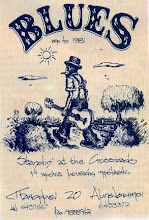

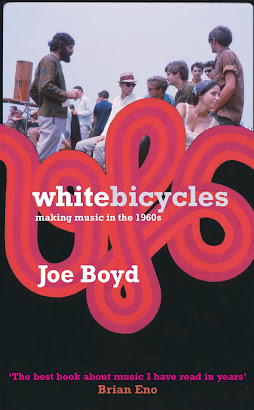
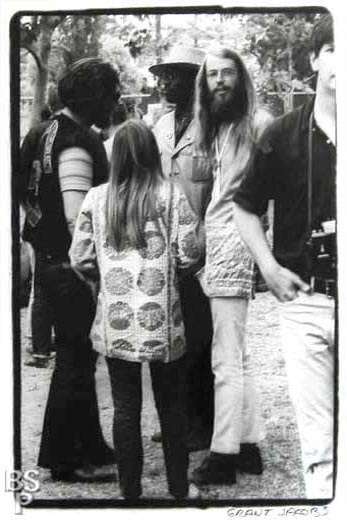
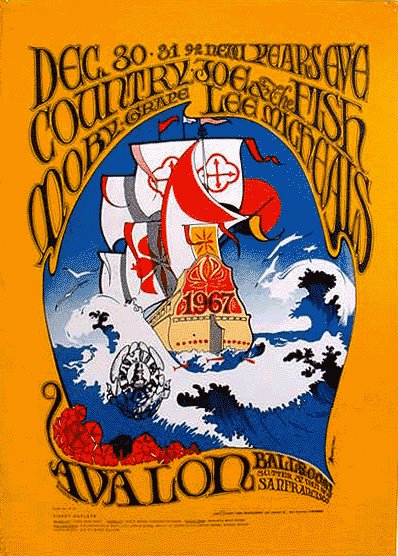
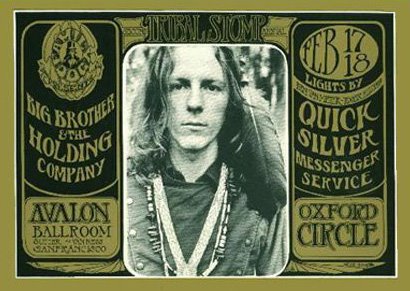
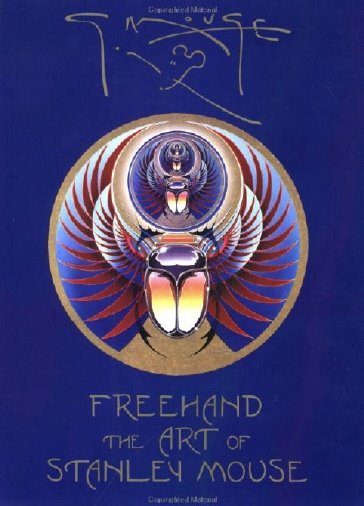.jpg)

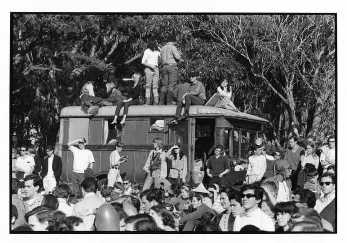




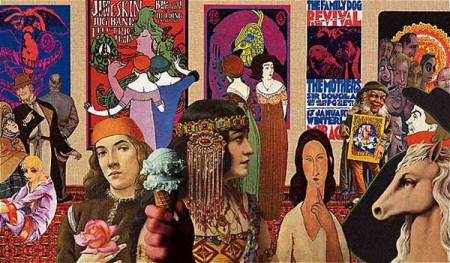.jpg)

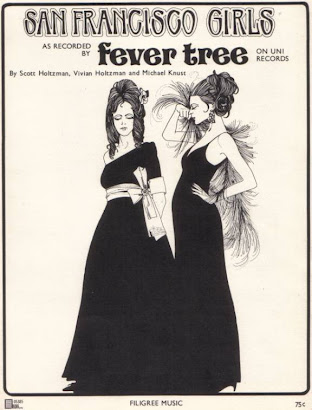
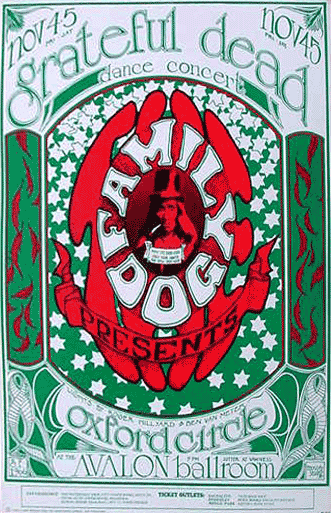
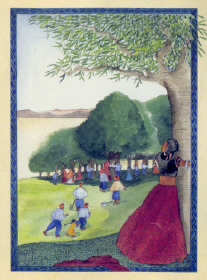
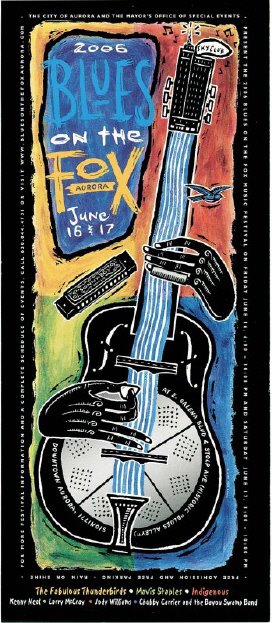














.jpg)












































































+-+cover.png)














.jpg)




































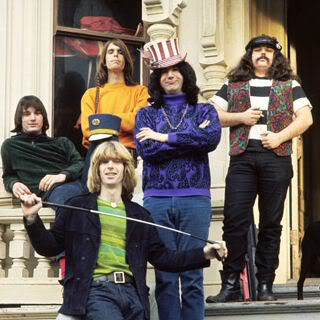






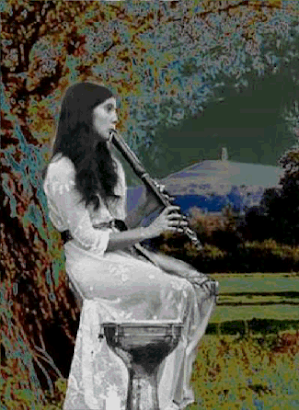












































.jpg)







